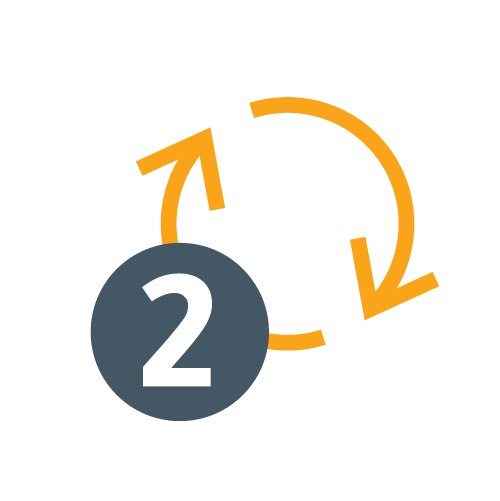Why Personality Tests Are a Game Changer for Leadership Success
Behind every leader lies a unique blend of personality traits that shape their thinking, behavior, and influence on others. That's why leadership personality tests are a vital tool for fostering self-awareness and growth. Rather than putting people in boxes, these assessments unlock deeper self-awareness, reveal hidden strengths, and identify potential derailers that might hold leaders back as their responsibilities grow.
For many HR and talent development professionals, personality tests are one of the most effective ways to guide leadership growth. When used strategically, these tools help leaders adapt their behaviors, strengthen relationships with peers and stakeholders, and prepare for bigger roles—ultimately creating stronger, more adaptable leadership across the organization.
What Are Leadership Personality Tests?
Leadership personality tests are psychometric tools designed to assess traits, values, preferences, and motivations. They help leaders and organizations understand how someone is “wired” so they can better leverage strengths, recognize potential derailers, and adapt or change their behaviors.
It’s essential to note that personality tests measure tendencies and preferences, rather than actual behaviors. While they reveal how someone is naturally inclined to think and react, research shows that certain personality traits can predict aspects of job performance. However, those correlations are typically modest compared to other methods—or to multi-method approaches that combine personality with simulations or behavioral assessments.
Examples of widely used models include:
Trait-based models (e.g., Five-Factor Model or “Big Five”)
Assess openness, conscientiousness, extraversion, agreeableness, and emotional stability.
Personal Style Frameworks
Examine how leaders approach communication, collaboration, and decision-making.
Preference-Based Frameworks
Explore how leaders process information, make choices, and interact with others.
But leadership personality tests alone are not enough. Their value lies in pairing results with coaching and development programs that help leaders work effectively with their personality, not change it. While personality traits remain relatively stable, leaders can learn to recognize how these traits influence their behavior and make conscious choices about how to respond in different situations.
This includes recognizing potential derailers—strengths that, if overused, can become problematic behaviors, such as when a natural attention to detail manifests as micromanagement. By understanding their personality tendencies, leaders can intentionally choose behaviors that align with their goals and adjust their approach based on what each situation demands. This behavioral flexibility—built on personality awareness—creates the adaptability and resilience needed to succeed at higher levels of responsibility.
Use Cases for Leadership Personality Tests
Personality assessments offer powerful benefits when used at the right moments in a leader’s journey. For example:
Development: Personality assessments fuel growth by revealing to each leader deep insights into how their own traits manifest in daily interactions. With coaching, leaders can build on strengths and actively work to manage derailers—for example, a highly confident leader learning to invite dissenting opinions before making significant decisions.
Selection (with caution): Personality data can highlight potential strengths or derailers that might affect a leader’s success in a new role. However, these insights must always be paired with behavioral data, like interviews or simulations, to avoid overinterpretation and bias. For example, a potential derailer may appear in the data, but a self-aware leader may already have strategies to manage that tendency effectively.
Succession Planning: As leaders advance to more senior roles, their personality has an even greater impact on organizational culture and strategy. Personality testing helps identify which tendencies may no longer serve them and prepares them to adapt to future roles.
Benefits of Leadership Personality Tests
Beyond these use cases, personality testing brings broader benefits:
- Self-awareness that leads to action: Leaders gain insight into their natural tendencies and learn how those tendencies affect their day-to-day leadership behavior. While awareness itself has value, it becomes more powerful when paired with coaching and targeted development that helps leaders turn insight into new behaviors.
- Shared understanding across teams: Personality assessments can be used to create a team mosaic, highlighting both natural synergies and potential tension points within a leadership team. In some cases, this can become part of a culture of openness, where leaders recognize their own tendencies and share them with colleagues—for example, a leader might acknowledge being risk-averse or perfectionistic and ask for help managing it. This builds accountability and trust, helping leaders understand not just themselves but one another.
- More informed selection and placement: While never the sole factor, personality assessments add crucial insight to selection decisions by revealing how a leader's natural traits align with role requirements. This additional data point, used in conjunction with other evaluation methods, helps organizations make more informed placement decisions that set leaders up for success.
- Improved leader-direct report relationships: Understanding personality differences helps leaders tailor their management style to what works best for each team member, improving engagement and performance.
- Better stress management: Leaders gain insight into their stress triggers and natural coping mechanisms, helping them build resilience and maintain effectiveness under pressure.
- Accelerated development planning: Personality insights pinpoint precisely where leaders should focus their efforts, creating personalized plans that work with their natural strengths. This targeted approach catalyzes behavioral changes and fosters a lasting impact on leadership readiness and succession planning.
- Organizational impact: Personality assessments themselves don’t automatically change outcomes. But when insights drive real changes in leader behavior as they leverage enablers and address derailers, organizations see more effective leaders and teams and healthier leadership pipelines.
When paired with development programs, personality assessments not only help leaders understand themselves but also create a shared language of growth and accountability that strengthens leadership at every level.
How to Effectively Implement Personality Tests
The impact of personality testing depends entirely on how it’s introduced and supported. Too often, organizations stop at generating awareness without helping leaders translate insights into behavioral change. Effective implementation ensures results translate into action. Best practices include:
- Choosing the right tool aligned to organizational needs. There are many personality assessments available, and they vary widely in quality and purpose. Organizations should carefully research their options and seek expert guidance when needed—not all personality tools are created equally.
- Clearly communicating purpose so leaders understand how assessment data will be used.
- Providing expert feedback and coaching to help leaders interpret results in their real-world context and link traits to leadership behaviors.
- Integrating insights into development plans so leaders practice behaviors that work with their personality traits. For example, a leader with high urgency might practice pausing for reflection and involving others in problem-solving.
- Creating a safe space for leaders to share personality insights with peers, seek coaching, and explore how traits impact their effectiveness, building collaboration and stronger working relationships.
Implementation should also go beyond individual action plans. Embedding personality insights into broader leadership development programs and culture enables leaders to support one another’s growth, ensuring that development is not a one-off exercise.
Common Misconceptions and Pitfalls
Despite their popularity, leadership personality tests are often misunderstood. Here are two of the most common myths—and the realities behind them:

Myth: Personality tests put people into restrictive boxes.
Reality: While some assessments do provide categories or types, these describe natural preferences—not rigid limitations. Personality reveals characteristic patterns of thoughts and feelings, but leaders can develop new behavior regardless of their type. The goal is for leaders to understand their wiring as a starting point for growth, not an excuse for why they “can’t” do something.

Myth: Personality predicts performance.
Reality: Personality reflects how you're naturally inclined to approach situations, not how well you'll perform in them. While personality does show some predictive validity, it is limited. Two leaders with opposite personality profiles can excel in the same role by developing different strategies that work with their natural tendencies. That’s why personality data should always be paired with behavioral and skills-based assessments and performance history to evaluate leadership potential.
One of the biggest pitfalls is relying on personality assessments as the primary input for hiring or promotion decisions. The truth is that personality tests don’t tell the whole story about how someone will actually perform in a role. They reveal preferences and tendencies, not competencies or future behavior. A highly introverted person might excel at public speaking; a detail-averse leader might run meticulous operations through learned behaviors and sound systems. Used on its own, personality data can mislead decision-makers and exclude talented leaders who've developed skills that complement or compensate for their natural tendencies. When combined with behavioral and skills-based data, personality insights add valuable context—but they should never drive decision-making.
Another common challenge is that strengths can become derailers when taken to extremes or applied in the wrong context. What makes a leader effective at one level can sometimes hold them back at the next. The drive for the results that built their career might damage team morale when they push too hard without considering people's capacity, or the collaborative approach that made them a great team leader might slow critical decisions when they need to act swiftly as an executive. Personality assessments help leaders spot these risks early, so they can develop the judgment to dial their strengths up or down as situations demand.
Turning Insight into Leadership Impact
Leadership personality tests aren’t just diagnostic—they’re catalysts for building more adaptable and effective leaders. When integrated into development programs, they help leaders understand their natural tendencies and consciously choose behaviors that better serve their teams and organizations. This combination of self-awareness and behavioral flexibility creates leaders who can adjust their approach based on what each situation demands, build stronger relationships across different personality types, and recognize when their strengths might be getting in their way. For organizations, this translates into more effective leadership at every level, better team dynamics, more inclusive cultures, and, ultimately, stronger business results.
Have a Question?
Frequently Asked Questions About Leadership Personality Tests
-
How can personality traits influence leadership effectiveness?
Personality traits shape how a leader thinks, reacts, and interacts with others, making self-awareness of those traits a critical foundation. For example, strengths like decisiveness or creativity may become pitfalls when over-applied, so when leaders can understand their natural tendencies, they can choose behaviors that elevate, rather than hinder, their leadership.
-
When is the best time to use a leadership personality test?
Personality assessments are especially useful when preparing leaders for new roles or when you want to deepen their self-understanding and readiness for growth opportunities. They’re not meant as stand-alone selection tools; rather, they work best when used alongside other behavioral or performance data.
-
What are the benefits of using a leadership personality test?
Such tests give leaders richer insight into their own patterns, including both strengths and potential derailers, which empowers them to adapt behavior consciously rather than assuming they must change their personality. They also foster shared language and more effective interaction within teams by clarifying how different traits influence collaboration.
-
What are the pitfalls of using a leadership personality test?
One major risk is treating personality results as rigid labels or singular decision-making tools, which can lead to stereotyping or flawed talent decisions. Additionally, if organizations lack follow-up, such as feedback, coaching, or development planning, the test insights may sit idle without translating into behavior change or performance improvement.
About the Author
Scott Bryant, Ph.D, is a consulting manager at DDI.
Topics covered in this blog

